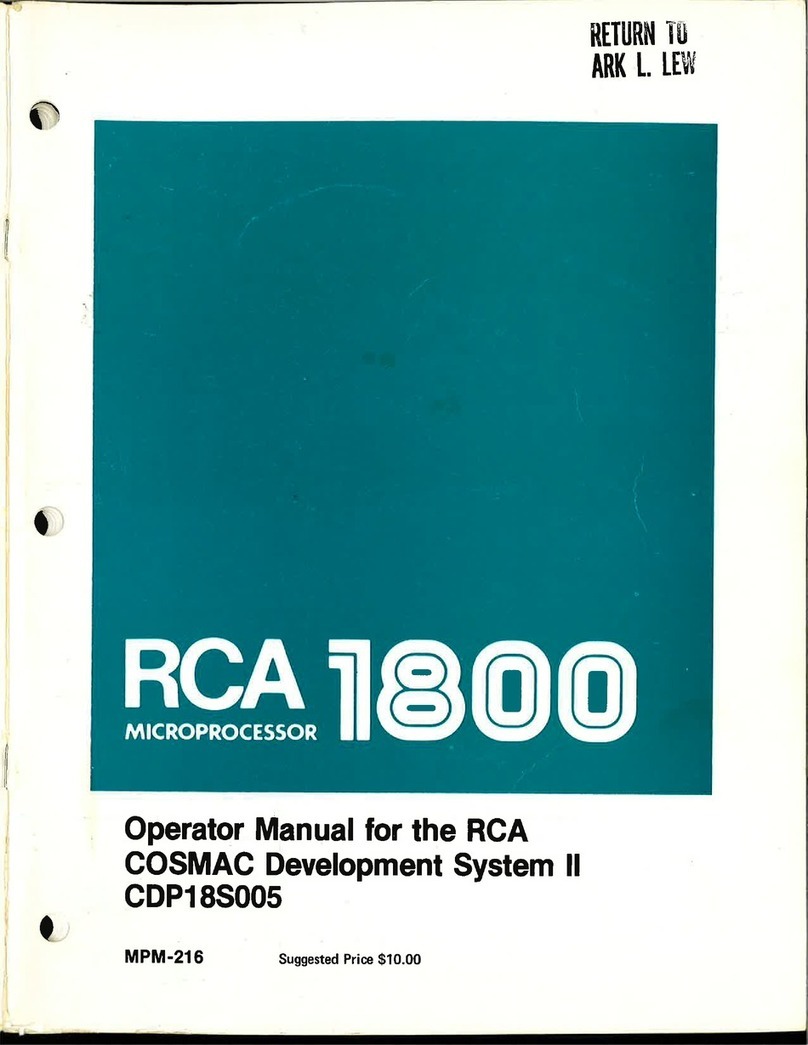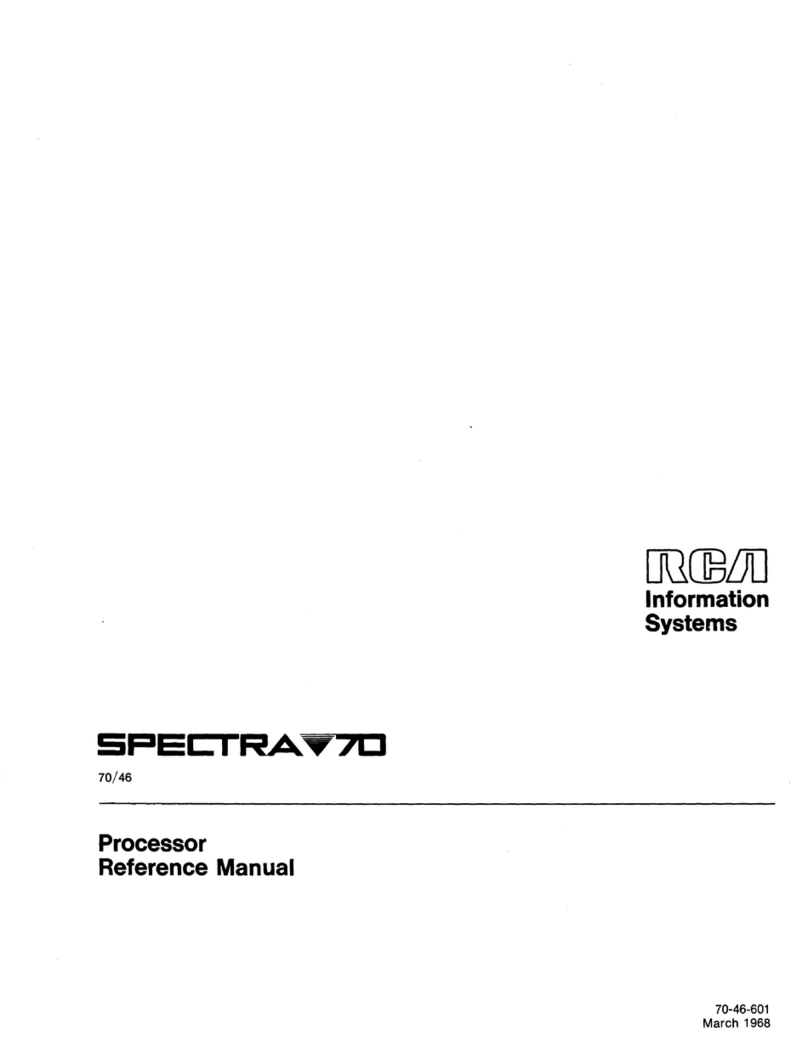
Table of Contents
Page
No.
Introduction
General. . . . . . . . . . . . . . . . . . . . . . . . . . . . . . . . . . . . . . . . . . . . . . . . . . . . . . . . . . . . . . . . . 7
Specific Features. . . . . . . . . . . . . . . . . . . . . . . . . . . . . . . . . . . . . . . . . . . . . . . . . . . . . . . . . . 8
System Organization
......................................................
8
COSMAC
Architecture
and
Notation.
. . . . . . . . . . . . . . . . . . . . . . . . . . . . . . . . . . . . . . . . . 10
Instructions and Timing.
..
. . . . . . .
..
. . . . . . . . .
..
. . . . . . . . . • . . . . . . . . . . . . . . . . . . . . 12
Instruction
Repertoire
Register Operations
......................................................
.
Memory Reference
.......................................................
.
ALU
Operations Using
M(R(X))
ALU
Operations Using M(R(P))
15
17
18
22
I
nput/Output
Byte Transfer
................................................
24
Branching.
. . . . . . . . . . . . . . . . . . . . . . . . . . . . . . . . . . . . . . . . . . . . . . . . . . . . . . . . . . . . . . 25
Control
................................................................
27
Interrupt
Handling.
. . . . . . . . . . . . . . . . . . . . . . . . . . . . . . . . . . . . . . . . . . . . . . . . . . . . . . .
28
Instruction
Utilization
...
. . . . . . . . . . . . . . . . . . . . . . . . . . . . . . . . . . . . . . . . . . . . . . . . . . 29
Memory
and Control Interface
Memory
Interface and
Timing
......................................
. . . . . . . . . 33
Control Interfaces. . . . . . . . . . . . . . . . . . . . . . . . . . . . . . . . . . . . . . . . . . . . . . . . . . . . . . . . .
35
I/O
Interface
Programmed
I/O
DMA
Operation
Interrupt
Control
Machine Code Programming
39
42
44
Sample System and Program. . . . . . . . . . . . . . . . . . . . . . . . . . . . . . . . . . . . . . . . . . . . . . . . . 47
Useful Instructions
with
X = P
...............
,..............................
51
Interru
pt
Service . . . . . . . . . . . . . . . . . . . . . . . . . . . . . . . . . . . . . . . . . . . . . . . . . . . . . . . . .
51
Branching Between
Pages
..................................................
53
Subroutine Techniques 53
Common Program
Bugs.
. . . . . . . . . . . . . . . . . . . . . . . . . . . . . . . . . . . . . . . . . . . . . . . . . . . . . . . . 57
Appendixes:
A -
Instruction
Summary
..................................................
58
B - State Sequencing
.....................................................
60
C - COSMAC Interface and
................................................
61
Chip Connections
D - COSMAC
Timing
Summary
.............................................
62
Index
..................................................
'.
. . . . . . . . . . . . . . . . . . . 63
3





























